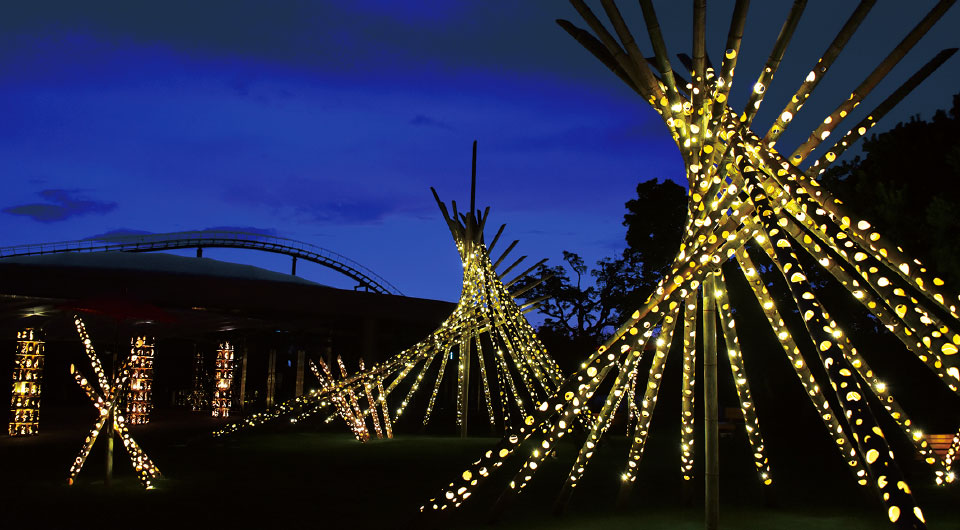

竹をパンダの食事として活用することで里山の環境を守りつつ、
It is very important to secure good quality bamboo for breeding pandas. 1994, when the pandas were first bred, the number of pandas bred was smaller than now, and they were fed mainly with special panda dango rather than bamboo, so bamboo collection in the Shirahama neighborhood was sufficient to meet their needs. However, after 2000, the number of pandas bred increased due to steady breeding and a shift to a bamboo-centered diet, so it was necessary to secure a new bamboo collection site. In 2005, in cooperation with the city of Kishiwada, which is engaged in the maintenance of bamboo forests, we were able to secure a new bamboo collection site. About 8 tons of bamboo branches and leaves are used as food for the pandas each year, contributing to the maintenance of the bamboo forest and the preservation of the mountain environment. On the other hand, we are faced with the contradiction that the bamboo left uneaten by the pandas and the parts that cannot be used as food for the pandas are disposed of. The Panda Bamboo Project is designed to resolve these contradictions and issues. The Panda Bamboo Project contributes to the preservation of satoyama by utilizing bamboo, which devastates satoyama, as a food source for pandas, and also aims to solve social issues by upcycling bamboo trunks, uneaten bamboo, and feces, which were previously discarded, into effective resources.
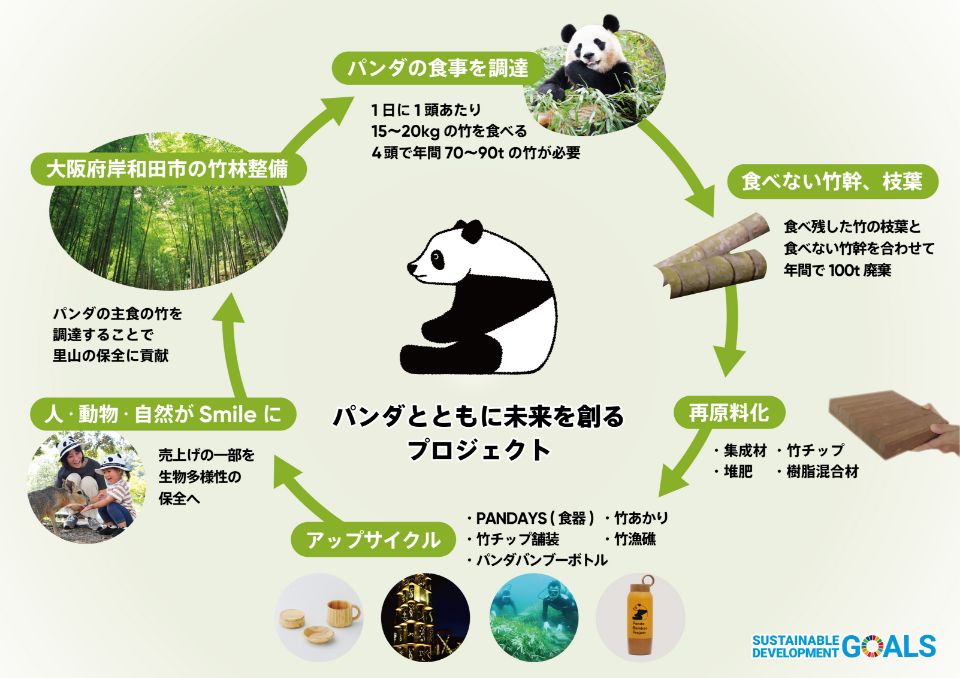
Creating a forest in the bamboo forests of Kishiwada City to promote the recycling of bamboo resources and to conserve biodiversity.
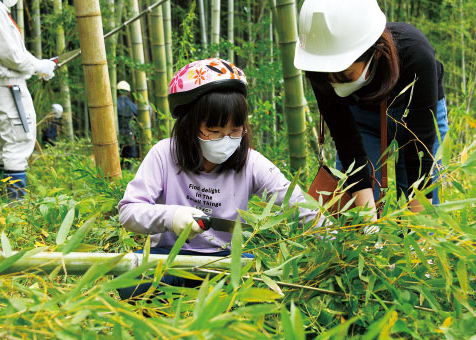
2011年から大阪府岸和田市と「岸和田丘陵地区における竹の提供に関する協定書」を締結し、岸和田丘陵地区内の市の所有する土地の竹を、パンダの食事として使用してきました。 2020年には協定書の刷新を行い、パンダが食べ残す竹の有効活用により竹を利用した循環型社会の実現を目指して「SDGsパートナーシップ協定(通称:パンダ協定)」を締結しました。 2022年、事業者が環境保全の一環として「森づくり」に取り組むための「アドプトフォレスト制度」に参画し、岸和田市の竹林における竹の有効利用(竹資源の循環)や、生物多様性を保全する森づくりに取り組むこととなり、「アドプトフォレスト協定」を締結しました。
Kishiwada City, Shirahama Town, and Ours Corporation (Adventure World) "Panda Bamboo Smile Wide-Area Comprehensive Collaborative Agreement
In August 2022, Kishiwada City, Osaka Prefecture, Shirahama Town, Wakayama Prefecture, and Ours Corporation (Adventure World) concluded a Comprehensive Collaborative Agreement on Panda Bamboo Smile in the wide area with the aim of stimulating mutual regional exchange in a wide range of fields and creating regional Smiles through public-private co-creation by utilizing their respective resources and strengths. (Adventure World) concluded a comprehensive cooperation agreement. As part of efforts related to mutual utilization of regional resources and formation of a regional recycling and symbiosis zone, a project utilizing Panda Bamboo was launched.
-
Panda Bamboo Tumbler
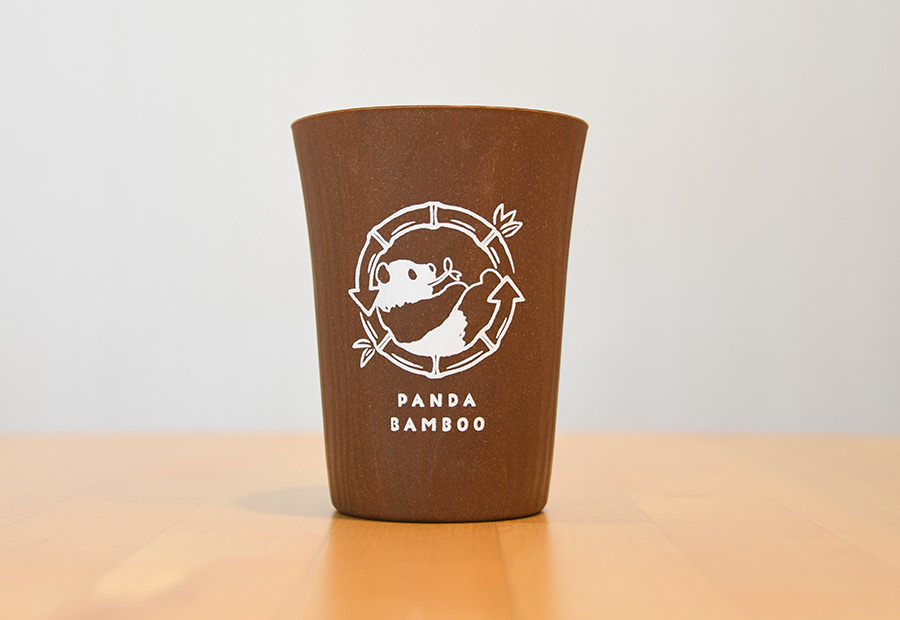
This is a non-disposable reusable cup made by upcycling bamboo, which is discarded by pandas without eating, as an effective resource. The tumbler is manufactured using the "Forest Tumbler" jointly developed by Asahi Breweries, Ltd. and Panasonic Corporation, with the aim of reducing plastic waste as a "non-disposable" beverage container. Ltd. and Panasonic Corporation to reduce plastic waste as a "non-disposable" beverage container.
-
Panda Bamboo
Mobile Workspot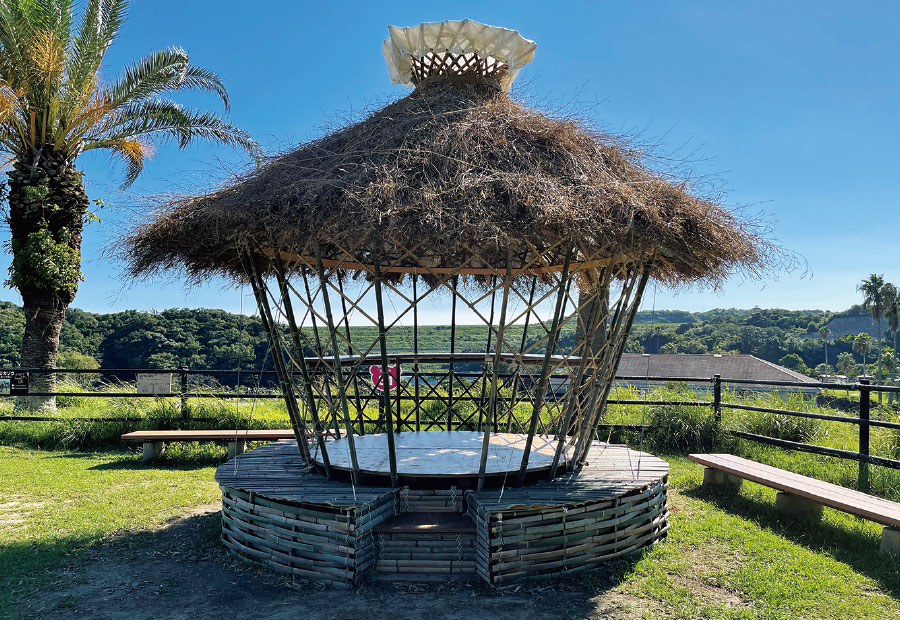
In collaboration with the Koichi Toki Laboratory at the University of Shiga Prefecture, planned and set up a nature-experience bamboo mobile workspot at Safari World. Bamboo is cut in Kishiwada City, and branches and leaves are used as food for pandas, while trunks and uneaten branches and leaves are used as materials.
-
Bamboo Crafts x Panda Bamboo
Collaborative product development
Bamboo craftsmen from Kyoto and students from Kyoto Traditional Crafts University sold "Panda Bamboo Rings" and held workshops. It was an opportunity to think about bamboo culture and social issues.
-
Connecting Smile Bamboo Light
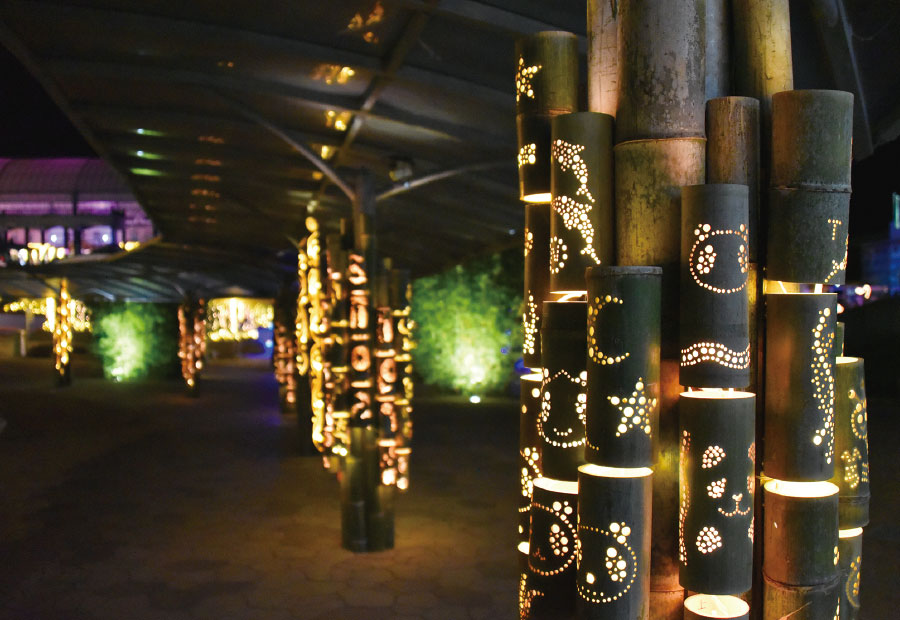
Bamboo lights were made from bamboo trunks that pandas do not eat, and were used to light the park at night in a gentle way. Employees, guests, and local residents participated in the production, providing an opportunity for people to connect with each other. In addition, more hotels installed bamboo lights, increasing the number of connections in the community.
-
Nanki-Shirahama Panda Bamboo EXPO.
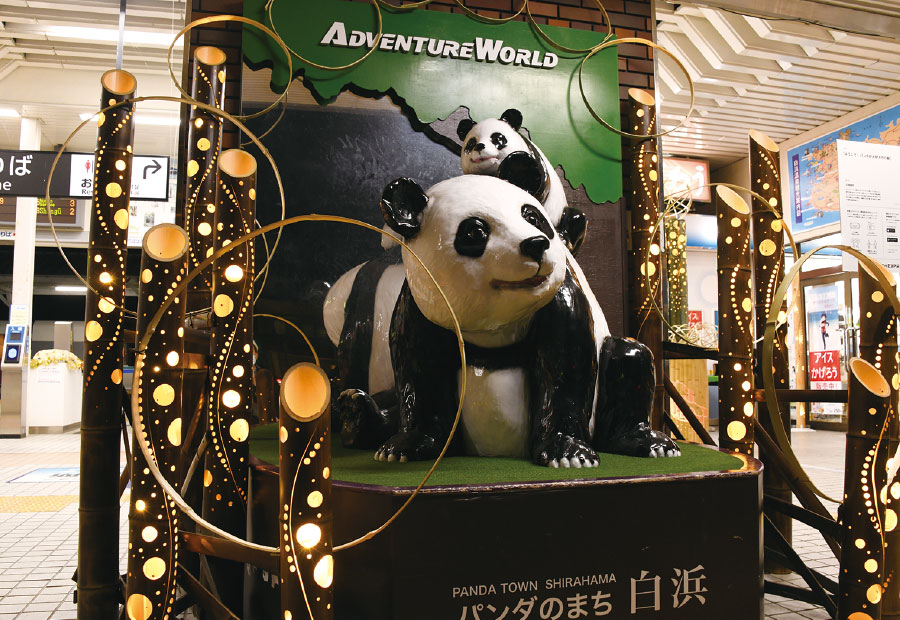
As the "City of Pandas," Shirahama Town will create the future with "Panda Bamboo," an integrated regional event of art and innovation from Japan to the world, from December 2020 to January 2021. Art event sessions will showcase bamboo and panda artwork at key locations in Shirahama Town. Symposium sessions featured lectures by bamboo researchers, architects, and artists on the potential, value, and future of bamboo.
